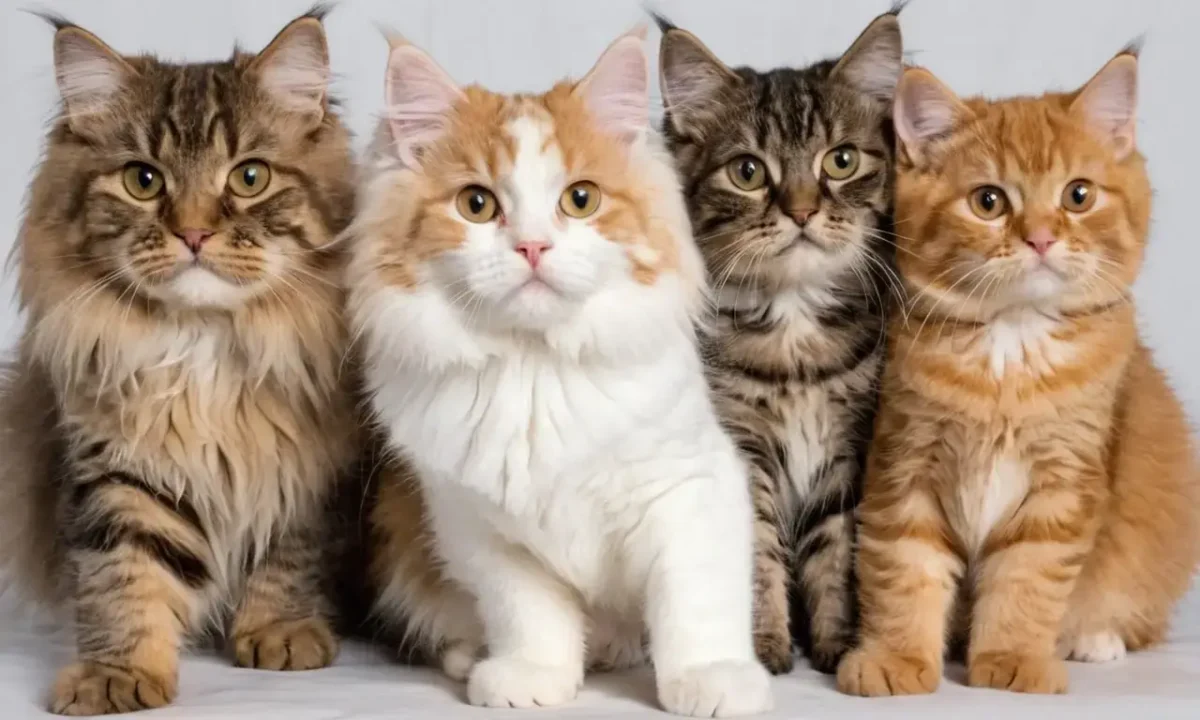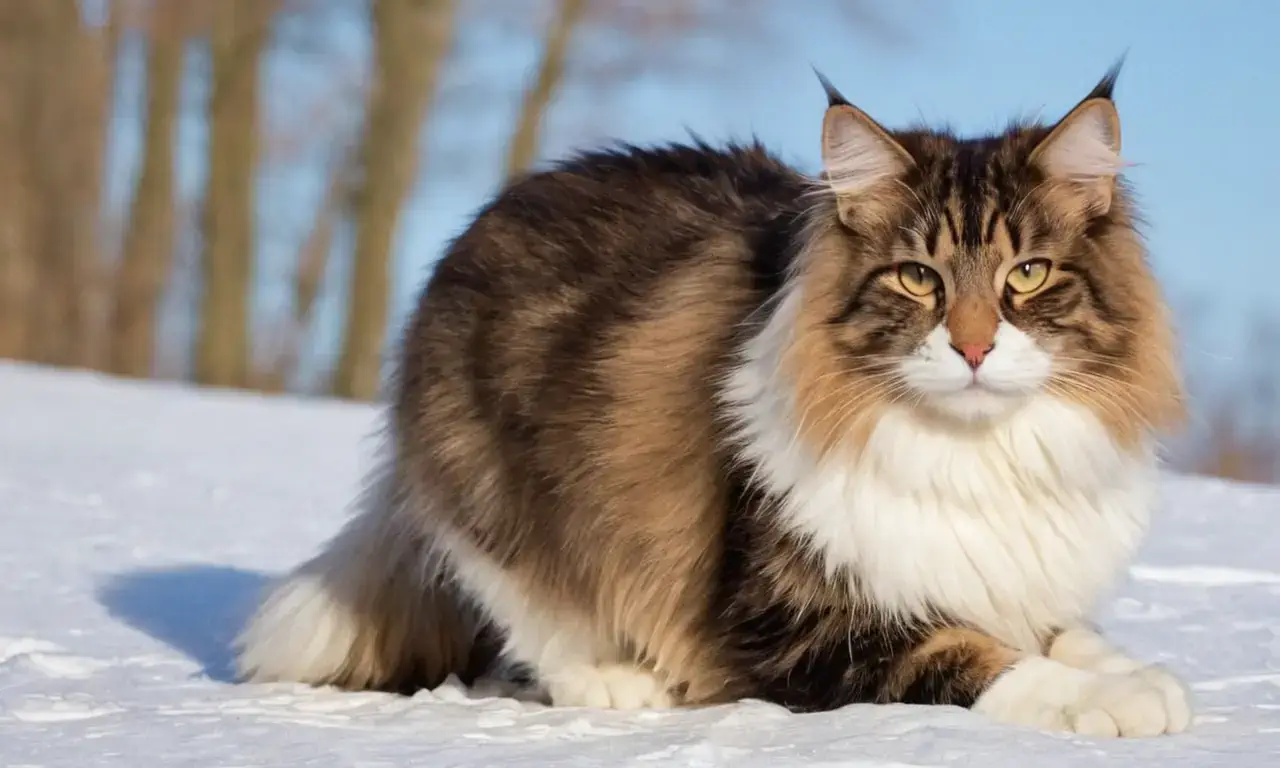Largest Cat Breeds: Size, Personality & Characteristics

The world of cat breeds is vast and diverse, with numerous varieties that cater to different tastes and preferences. Among these, one aspect stands out - size. Some domestic cats are truly massive, making them a fascinating subject for many feline enthusiasts. The largest domestic cat in the world, for instance, can weigh up to 26 pounds (11.8 kg), which is significantly larger than your average household pet.
This article delves into the realm of the largest breed of cat in the world, exploring ten breeds that are known for their impressive size and unique characteristics. From the Pixiebob's striking appearance to the Savannah's wild hunting instincts, each breed offers a distinct experience for both owners and enthusiasts alike. Understanding these breeds not only provides insight into their physical attributes but also sheds light on their personalities, temperaments, and needs.
- Size Comparison
- Pixiebob Characteristics
- British Shorthair Traits
- Norwegian Forest Cat Features
- Siberian Breed Overview
- Turkish Van Personality
- Selkirk Rex Grooming
- RagaMuffin Temperament
- Ragdoll Physical Appearance
- Savannah Hunting Instincts
- Chausie Health Considerations
- History of Large Cat Breeds
- Conclusion
Size Comparison
When discussing the largest domestic cat in the world, it's essential to consider size comparisons among different breeds. The weight range of these cats can vary significantly, from around 10 pounds (4.5 kg) for some smaller breeds like the Pixiebob to over 26 pounds (11.8 kg) for larger ones such as the Savannah. This substantial difference in weight is not only due to their muscle mass but also reflects their genetic makeup and evolutionary history.
For instance, the biggest domestic cat breed often requires more space than smaller breeds. A spacious living area or a dedicated outdoor enclosure can be beneficial for these cats, allowing them to move freely and engage in natural behaviors like hunting and climbing. On the other hand, smaller breeds might thrive in apartments with minimal space, provided they receive adequate attention and playtime.
Pixiebob Characteristics
The Pixiebob is one of the larger domestic cat breeds, known for its striking appearance and robust build. This breed typically weighs between 10 to 15 pounds (4.5 to 6.8 kg), making it a significant presence in any household. One of the most distinctive features of the Pixiebob is its coat pattern, which often includes tabby or tortoiseshell markings on a background of brown or gray fur.
In terms of personality, Pixiebobs are generally described as playful and affectionate. They enjoy interacting with their owners and can be quite demanding when it comes to attention. Their intelligence also makes them responsive to training, which is beneficial for those who wish to engage in interactive play or teach tricks. However, due to their size and energy level, they may not be the best fit for every household.
British Shorthair Traits
The British Shorthair is another breed that stands out among larger domestic cats. Known for its sturdy build and broad face, this cat typically weighs between 9 to 17 pounds (4 to 7.7 kg). One of the most recognizable features of the British Shorthair is its short, dense coat, which requires minimal grooming.
In terms of personality, British Shorthairs are often described as calm and laid-back. They are not overly demanding and can be quite independent, making them suitable for busy households or those who prefer a more relaxed pet experience. Their affectionate nature means they will still enjoy spending time with their owners but on their own terms.
Norwegian Forest Cat Features

The Norwegian Forest Cat is one of the larger breeds, weighing between 13 to 20 pounds (5.9 to 9 kg). This breed boasts a thick double coat that requires regular grooming to prevent matting and tangling. Their fur can be either short or long, depending on the individual cat.
In terms of personality, Norwegian Forest Cats are known for their intelligence and playfulness. They enjoy interactive toys and games, making them an excellent choice for owners who want a stimulating companion. However, they also have a strong prey drive, which may require careful consideration when introducing them to other pets in the household.
Siberian Breed Overview
The Siberian is one of the largest domestic cat breeds, with males weighing up to 26 pounds (11.8 kg). This breed has a thick double coat that sheds heavily during spring and fall, requiring regular grooming. Their fur can be either short or long, depending on the individual.
In terms of personality, Siberians are often described as friendly and outgoing. They love human interaction and enjoy being part of their family's activities. However, due to their size and energy level, they require a lot of space and attention, making them best suited for larger households or those with extensive outdoor areas.
Turkish Van Personality
The Turkish Van is another breed known for its large size, weighing between 10 to 15 pounds (4.5 to 6.8 kg). This breed boasts a distinctive white coat with patches of color on the head and tail. Their personality is often described as playful and affectionate.
In terms of temperament, Turkish Vans are highly social cats that thrive on interaction. They enjoy playing games and engaging in activities that stimulate their minds and bodies. However, they can be quite vocal, so owners should be prepared for regular meows and purrs.
Selkirk Rex Grooming
The Selkirk Rex is a breed known for its unique curly coat, which requires regular grooming to prevent matting. This breed typically weighs between 8 to 12 pounds (3.6 to 5.4 kg), making it one of the smaller larger breeds.
In terms of personality, Selkirks are often described as playful and affectionate. They enjoy human interaction but can be quite independent at times. Their intelligence makes them responsive to training, which is beneficial for owners who wish to engage in interactive play or teach tricks.
RagaMuffin Temperament
The Ragamuffin is a breed known for its large size and fluffy coat. They typically weigh between 12 to 20 pounds (5.4 to 9 kg). Their temperament is often described as gentle and affectionate, making them an excellent choice for families with children.
In terms of personality, RagaMuffins are highly social cats that enjoy being around people. They are playful but not overly demanding, which makes them suitable for a variety of living situations. However, their size means they require plenty of space to move around and engage in natural behaviors.
Ragdoll Physical Appearance
The Ragdoll is one of the largest domestic cat breeds, with males weighing up to 20 pounds (9 kg). This breed boasts a soft, silky coat that requires minimal grooming. Their physical appearance includes a broad face and large eyes, giving them an endearing expression.
In terms of personality, Ragdolls are known for their affectionate nature. They love human interaction and will often follow their owners around the house. However, due to their size and laid-back temperament, they may not be as demanding as some other breeds.
Savannah Hunting Instincts
The Savannah is a breed that stands out among larger domestic cats for its wild appearance and hunting instincts. They typically weigh between 12 to 20 pounds (5.4 to 9 kg) and have a distinctive coat pattern featuring spots or rosettes on a background of brown or gray fur.
In terms of personality, Savannahs are highly energetic and curious. Their wild ancestry means they have strong hunting instincts, which can make them challenging for inexperienced owners. However, with proper training and socialization, they can become loving companions that enjoy interacting with their human family members.
Chausie Health Considerations
The Chausie is a breed known for its large size, weighing between 15 to 25 pounds (6.8 to 11.3 kg). This breed has a mix of domestic and wild ancestry, which can sometimes lead to health issues related to their genetic makeup.
In terms of personality, Chauies are often described as intelligent and active. They require plenty of space to move around and engage in natural behaviors like climbing and hunting. However, due to their size and potential health concerns, they may not be the best fit for every household.
History of Large Cat Breeds
The history of large cat breeds is complex and spans centuries. Many of these breeds have evolved from wild ancestors that were domesticated over time, resulting in unique characteristics such as size, coat patterns, and hunting instincts. Understanding this history provides valuable insights into the development of modern breeds and their specific needs.
Conclusion
Each of the larger domestic cat breeds has its own unique personality, physical appearance, and set of requirements. From the playful Turkish Van to the gentle Ragdoll, there's a breed out there for every owner. Whether you're looking for a companion that will follow you around the house or one that will engage in high-energy activities, choosing the right breed is crucial for creating a happy and fulfilling relationship with your cat.
This text provides an overview of various larger domestic cat breeds, including their physical characteristics, personalities, and needs. It highlights the unique traits of each breed, from the playful Turkish Van to the gentle Ragdoll, and emphasizes the importance of understanding these differences when choosing a pet.
Leave a Reply